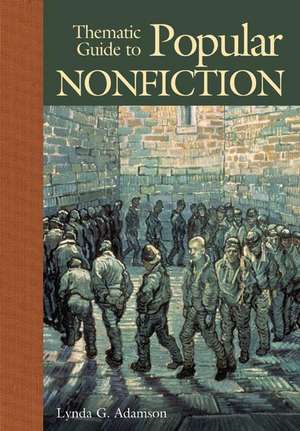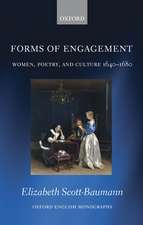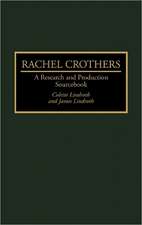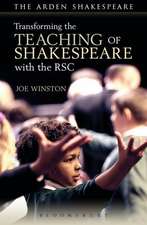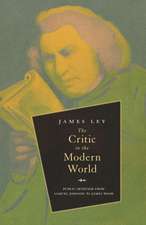Thematic Guide to Popular Nonfiction
Autor Lynda G. Adamsonen Limba Engleză Hardback – 29 ian 2006 – vârsta până la 17 ani
Preț: 283.33 lei
Preț vechi: 481.27 lei
-41% Nou
Puncte Express: 425
Preț estimativ în valută:
54.22€ • 56.72$ • 45.04£
54.22€ • 56.72$ • 45.04£
Carte tipărită la comandă
Livrare economică 02-16 aprilie
Preluare comenzi: 021 569.72.76
Specificații
ISBN-13: 9780313328558
ISBN-10: 0313328552
Pagini: 368
Dimensiuni: 178 x 254 x 28 mm
Greutate: 0.92 kg
Editura: Bloomsbury Publishing
Colecția Greenwood
Locul publicării:New York, United States
ISBN-10: 0313328552
Pagini: 368
Dimensiuni: 178 x 254 x 28 mm
Greutate: 0.92 kg
Editura: Bloomsbury Publishing
Colecția Greenwood
Locul publicării:New York, United States
Notă biografică
Lynda G. Adamson is Professor Emeritus of Literature, Prince George's Community College, where she has taught American, Children's, and Comparative Literature courses. Her many books include Thematic Guide to the American Novel (2002), Notable Women in American History (1999), and Recreating the Past: A Guide to American and World Historical Fiction for Children and Young Adults (1994), all available from Greenwood Press.
Cuprins
PrefaceIntroductionAdolescent FemalesAfrican LifeAmerican DreamAnimalsBeginningsBrothersChangeCommerceConservationCooperationDeathDesireThe EarthEducationEnvironmentExpatriate ExperiencesExplorationFamilyFathers and SonsFemale IdentityFishermenGenocideIllnessImmigrantsInvestigationsIslamic WomenJournalistsLatinas in AmericaLeadershipMavericksThe MindMothers and SonsMurderMysteriesPerseverancePovertyPowerPrisonsRace RelationsRoamingRocket ScienceSports DreamsSurvivalTechnologyTraveling to TibetVietnam War EncountersWomen of Chinese AncestryWorkWorld War IIWriters
Recenzii
This work aims to guide librarians and teachers in selecting the most outstanding works on various themes. Popular nonfiction means works with an enduring readership that present a personal viewpoint on topics, but not from a scholarly perspective. Adamson divides the field into 50 categories ranging from Adolescent Females to World War II. Each section begins with a very short bibliographic essay and then presents at length the merits of three to four titles. For the section Race Relations, Adamson selected W. E. B. Du Bois's The Souls of Black Folk, John Howard Griffin's Black like Me, and The Autobiography of Malcolm X. For each she gives a useful synopsis of the work, helpful when searching for titles that delineate the theme in a significant way and that are appropriate for students. At the end of a section is usually a short list of other titles of merit..Highly recommended. Librarians/libraries serving high school or young adult readers.
[T]his title achieves its aims consistently and admirably. Teachers at . high school and college level have here a useful resource to choose books and themes to work with their pupils. Interested students have also a resource to help them widen their reading and and make that reading even more informed and productive. Any such work is to be welcomed.
Whether it is labeled creative nonfiction, factual fiction, literary journalism or new journalism, the practice of presenting fact through the technique of fiction by concentrating on immediacy within such forms as autobiography, memoir, biography, essay, journal, science writing and travel writing. Adamson offers over 50 themes and over 150 works to provide an overview of creative nonfiction, covering such topics as adolescent girls, African life, beginnings, change, conservation, desire, the earth, education, exploration, genocide, illness, leadership, murder, poverty, sports dreams, survival, work and writers. She provides brief descriptions of works and themes for each topic, along with a list of other suggested reading. The result is not only informative but both inspirational and cautionary for aspiring high school and college nonfiction writers.
In her preface, author Adamson explains that this guide discusses books sometimes called creative nonfiction, nonfiction novels, or other similar terms. It was written for high-school and college teachers teachers who need to identify nonfiction works that can be used in courses in various disciplines..The heart of each chapter is the analysis of the chosen books and how they exemplify the theme. The discussion for each book is a page and one-half and covers not only the content in the book but also the literary devices used, the author's style and use of language, plot devices, setting, and approach to theme. The discussions are quite complete and will let teachers easily see if a book would be appropriate for their courses..High-school and college teachers will find the guide very useful, and for this reason school and college libraries should purchase it. Public libraries can purchase as need demands.
[T]his title achieves its aims consistently and admirably. Teachers at . high school and college level have here a useful resource to choose books and themes to work with their pupils. Interested students have also a resource to help them widen their reading and and make that reading even more informed and productive. Any such work is to be welcomed.
Whether it is labeled creative nonfiction, factual fiction, literary journalism or new journalism, the practice of presenting fact through the technique of fiction by concentrating on immediacy within such forms as autobiography, memoir, biography, essay, journal, science writing and travel writing. Adamson offers over 50 themes and over 150 works to provide an overview of creative nonfiction, covering such topics as adolescent girls, African life, beginnings, change, conservation, desire, the earth, education, exploration, genocide, illness, leadership, murder, poverty, sports dreams, survival, work and writers. She provides brief descriptions of works and themes for each topic, along with a list of other suggested reading. The result is not only informative but both inspirational and cautionary for aspiring high school and college nonfiction writers.
In her preface, author Adamson explains that this guide discusses books sometimes called creative nonfiction, nonfiction novels, or other similar terms. It was written for high-school and college teachers teachers who need to identify nonfiction works that can be used in courses in various disciplines..The heart of each chapter is the analysis of the chosen books and how they exemplify the theme. The discussion for each book is a page and one-half and covers not only the content in the book but also the literary devices used, the author's style and use of language, plot devices, setting, and approach to theme. The discussions are quite complete and will let teachers easily see if a book would be appropriate for their courses..High-school and college teachers will find the guide very useful, and for this reason school and college libraries should purchase it. Public libraries can purchase as need demands.
